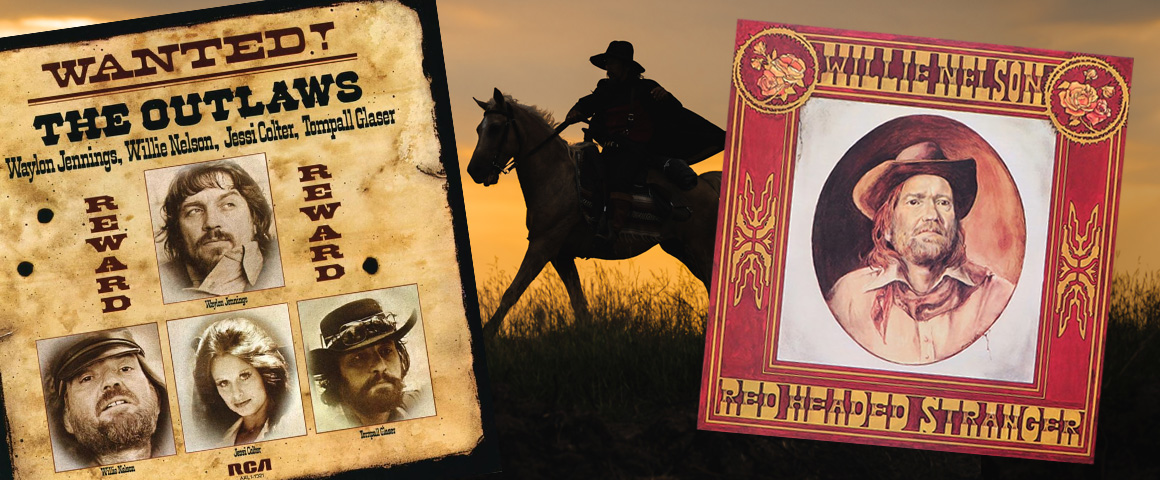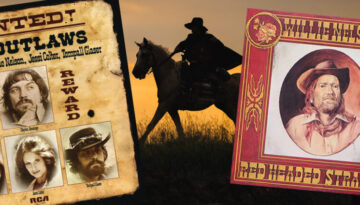OUTLAW COUNTRY MUSIC – AN OUTSIDER’S INTRODUCTION

OUTLAW COUNTRY MUSIC – AN OUTSIDER’S INTRODUCTION
Outlaw Country music isn’t just a sound—it’s a movement, a way of life, and a rebellion against the constraints of the mainstream music industry. Emerging in the late 1960s and hitting its stride in the 1970s, Outlaw Country was born from a desire for artistic freedom and a return to the raw, authentic spirit of country music. It was a sound that rejected the polished, overproduced style dominating Nashville and instead embraced gritty storytelling, rugged individualism, and an unapologetic attitude.
THE ROOTS OF THE OUTLAW MOVEMENT
The seeds of Outlaw Country were planted long before the term was coined. Artists like Hank Williams, Johnny Cash, and Merle Haggard laid the foundation with their hard-edged, rebellious personas and honest songwriting. Their music resonated with those who felt disillusioned by the constraints of society and the music industry alike.
By the 1960s, Nashville’s Music Row had become known for its tight control over artists and its preference for polished, radio-friendly productions. Record executives dictated how albums should sound, from the choice of producers to the musicians who played on them. This formulaic approach stifled creativity and left many artists longing for something more authentic.
THE RISE OF THE OUTLAWS
Outlaw Country as a distinct movement took shape in the late 1960s and early 1970s, led by artists who refused to conform. Willie Nelson, Waylon Jennings, Kris Kristofferson, and Johnny Cash became the faces of this new sound. They demanded the right to record their music on their own terms, often bypassing traditional Nashville producers in favor of a raw, unfiltered style.
One of the defining albums of the movement was Honky Tonk Heroes (1973) by Waylon Jennings. With a stripped-down sound and rebellious lyrics, the album showcased the storytelling and defiance that would become hallmarks of the genre. Around the same time, Willie Nelson left Nashville for Texas, where he embraced a more freewheeling, eclectic sound that fused country with folk, rock, and blues. His 1975 album Red Headed Stranger became a landmark of Outlaw Country.
THE OUTLAW IMAGE AND INFLUENCE
Outlaw Country wasn’t just about the music—it was also about attitude and lifestyle. These artists cultivated a renegade image, often donning long hair, beards, and leather jackets, rejecting the clean-cut appearance expected of country stars. They sang about drinking, heartbreak, lawlessness, and life on the road, resonating with working-class fans who saw themselves reflected in the lyrics.
The movement reached its peak with the release of Wanted! The Outlaws in 1976, a compilation album featuring Jennings, Nelson, Tompall Glaser, and Jessi Colter. It became country music’s first platinum-certified album, proving that the outlaw spirit had mainstream appeal despite its rebellious nature.
THE LEGACY OF OUTLAW COUNTRY
By the 1980s, mainstream country music began shifting once again, and the Outlaw movement faded from the charts. However, its influence never disappeared. The spirit of Outlaw Country can be heard in modern artists like Sturgill Simpson, Chris Stapleton, and Cody Jinks, who continue to challenge the norms of the industry while staying true to the roots of the genre.
Moreover, Outlaw Country’s impact extended beyond music. Its influence is evident in literature and film, from the rugged storytelling of Cormac McCarthy to movies like The Highwaymen and Crazy Heart, which capture the ethos of the Outlaw musician.
A FINAL WORD
Outlaw Country was never just about making music—it was about making a stand. It was about rejecting corporate control, embracing personal freedom, and staying true to the raw emotions that define country music. Though the golden age of the Outlaw movement may have passed, its legacy continues to inspire artists and fans alike, proving that true country music will always have a place for the rebels and the rule-breakers.
While not full-blooded Outlaw Country artists, many others have contributed to what more loosely could be called Outlaw music. For example, one of the classic albums on the subject must surely be The Eagles 1973 release Desperado.
